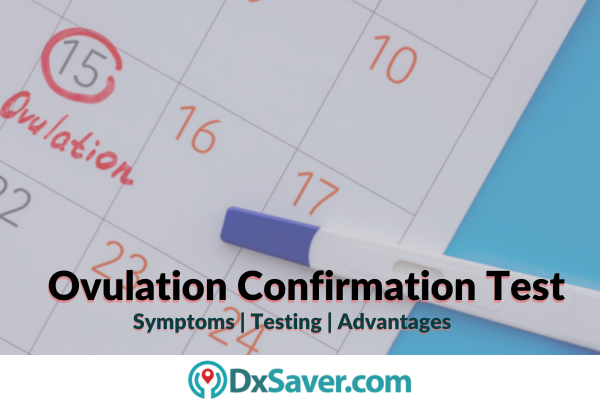
For a few women, conceiving a child might be difficult. Ovulation confirmation kits are a helpful tool that can assist women in achieving timely ovulation. The chances of getting pregnant increase when you understand what ovulation is, when it happens, and how it functions.
In this blog, you will read about the importance of ovulation, the advantages of ovulation confirmation kits, and their functionality.
- What is ovulation?
- When does ovulation occur?
- How Does Ovulation Take Place?
- How do you determine the time of your ovulation?
- What happens when I am not ovulating?
- What are the steps required to improve ovulation?
- What are the different methods of Ovulation Confirmation tests?
- What is an at-home ovulation confirmation test?
- How is an ovulation confirmation test taken?
- What to do after an ovulation confirmation test?
- What Advantages Do At-Home Ovulation Confirmation Test Kits Offer?
For our readers, who are more interested in knowing the ovulation confirmation test cost beforehand, we begin with that section.
How much does an ovulation confirmation test cost?
An ovulation confirmation test costs $32 in the U.S. The cost of an ovulation confirmation test also depends on your choice of visiting the nearest lab or getting tested at home using the skin vitality home test kit. Complete the procedure and get instant results in 5 minutes. Doctor consultation is also available for further treatment or any kind of medical advice.
The following table shows the ovulation confirmation test kit cost by one of our partners located in the U.S.
Name of our Partner Labs | Book Online |
myLabBox(Home Test Kit)
| Offer Price$32 |
What is ovulation?
Ovulation is a stage of the female menstrual cycle. The ovary releases a mature egg during this process. The egg released travels via the fallopian tube and is fertilized within 12 to 24 hours.
Ovulation is the only time for a woman to get pregnant. If ovulation is absent, irregular, or rare, it can get challenging for a woman to conceive. Thus, both ovulation and pregnancy are linked to each other.
When does ovulation occur?
Ovulation typically occurs once every month, two weeks before your next menstruation. A woman can ovulate for 16 to 32 hours. Nevertheless, the length of each person’s cycle and the interval between ovulation and the beginning of the following menstrual period may differ. If you do not have the regular 28-day monthly cycle, keeping a menstrual calendar might help you understand how long your menstrual cycle is and when you’re most likely to ovulate.
If you are not ovulating, then it is most likely that you are:
- Using the birth control pill
- Pregnant or
- Postmenopausal
How Does Ovulation Take Place?
The complex process of ovulation requires the coordination of several hormones throughout the body. First, at the beginning of the process, follicle-stimulating hormone (FSH) is released by the pituitary gland in the brain. The ovaries’ follicles, each of which houses an immature egg, are induced to grow and develop by the hormone FSH.
The brain receives a signal from the growing follicles that release estrogen to decrease the release of FSH and begin releasing luteinizing hormone (LH) in its place. The developed egg is forced out of the follicle and into the fallopian tube by LH. That is ovulation.
The corpus luteum, which generates the progesterone (PdG) hormone, is formed after ovulation by the leftover follicle cells. Progesterone helps support the early stages of pregnancy and gets the lining of the uterus ready for implantation provided the egg is fertilized.
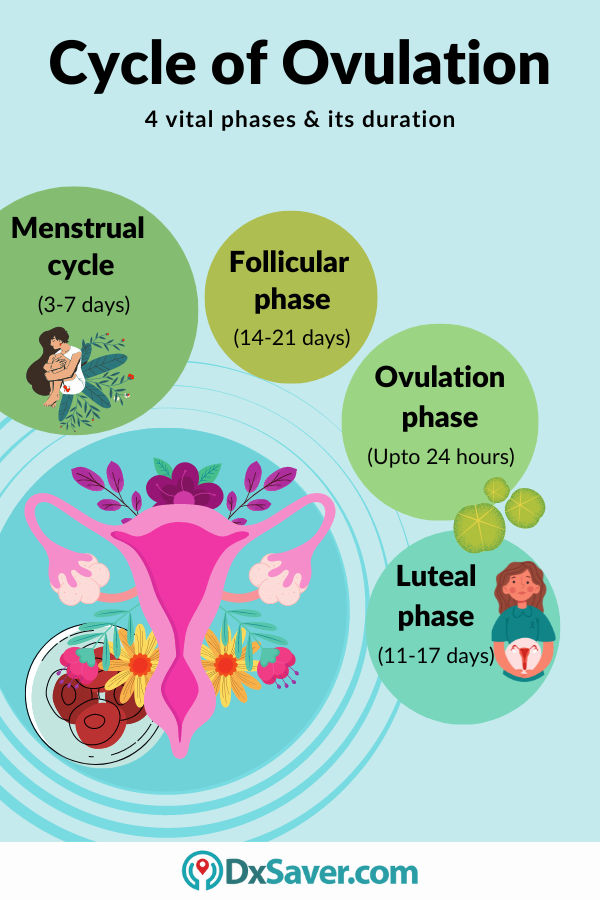
How do you determine the time of your ovulation?
If your menstrual cycles are regular, you surely ovulate every month. You will notice the following symptoms during ovulation in addition to the calendar, such as:
- Your vaginal discharge thickens and becomes hazy (like egg white).
- Minor abdominal or pelvic discomfort.
- Your basal body temperature (BBT), which measures your body’s core temperature, increases.
- Enhanced sex desire.
- Changes in mood
- Breast tenderness
- Decrease in appetite
- Sense of taste, vision, and smell is enhanced
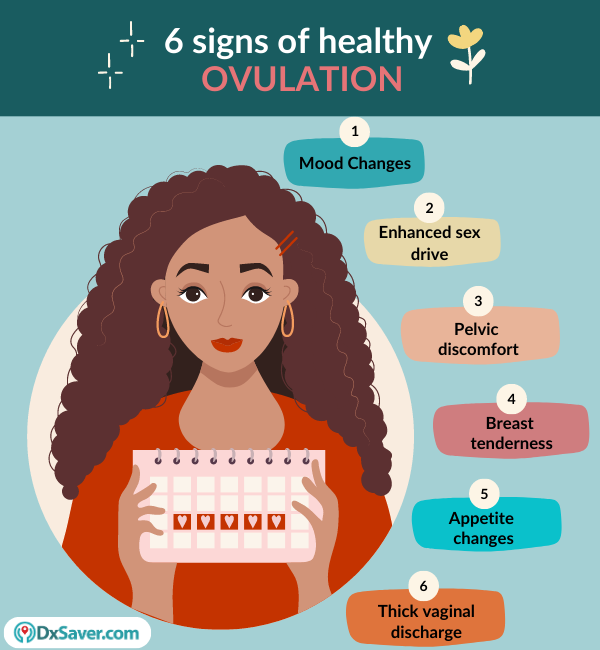
What happens when I am not ovulating?
Ovulation may be affected by healthcare issues or lifestyle factors. Some of them are:
- Breastfeeding (chestfeeding).
- Menopause.
- Polycystic ovarian syndrome (PCOS).
- Primary insufficiency of the ovaries.
- High or low body fat, too much stress or exhaustion, or too much activity can all cause amenorrhea.
You could not be ovulating if your menstruation is infrequent or if you spend months without having one. If this is the case, speak with your doctor right away so they can rule out any major illnesses.
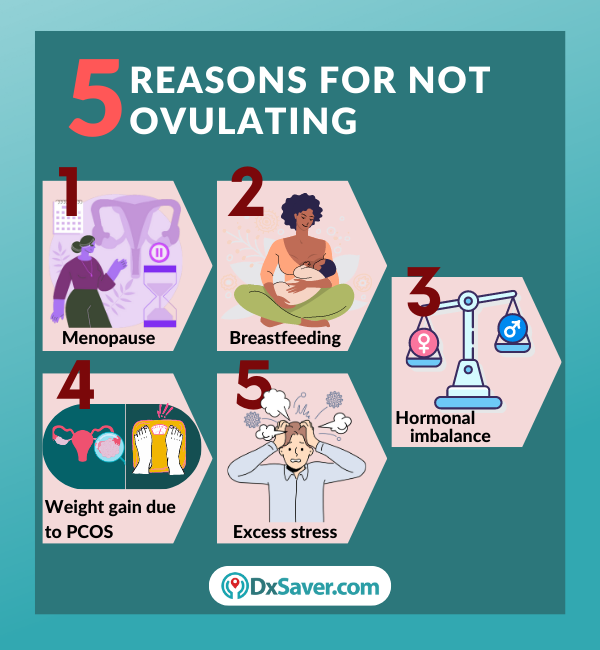
What are the steps required to improve ovulation?
According to the National Library of Medicine, as much as fifteen percent of American couples experience fertility problems. Although becoming a parent can turn quite challenging during certain times, remember that you are not alone in facing these difficulties.
Here is a list of recommended natural methods for improving ovulation and hastening pregnancy:
- Consume anti-inflammatory foods such as vegetables, fruits, and nuts.
- A substantial breakfast can prevent reproductive issues and improve fertility.
- Avoid consuming trans fats because they can harm insulin sensitivity and raise the risk of ovulatory infertility.
- Substituting plant-based protein sources like beans, nuts, and seeds for some animal proteins such as meat, fish, and eggs helps improve ovulation.
- A lower-carb diet helps prevent PCOS.
- For both women and men, increasing moderate but not excessive physical exercise has a good impact on fertility, especially for those who are obese.
- Practice meditation to control your stress levels.
- Don’t drink too much.
- Avoid drinking too much coffee.
- Eat frequent, balanced meals to keep your weight in check.
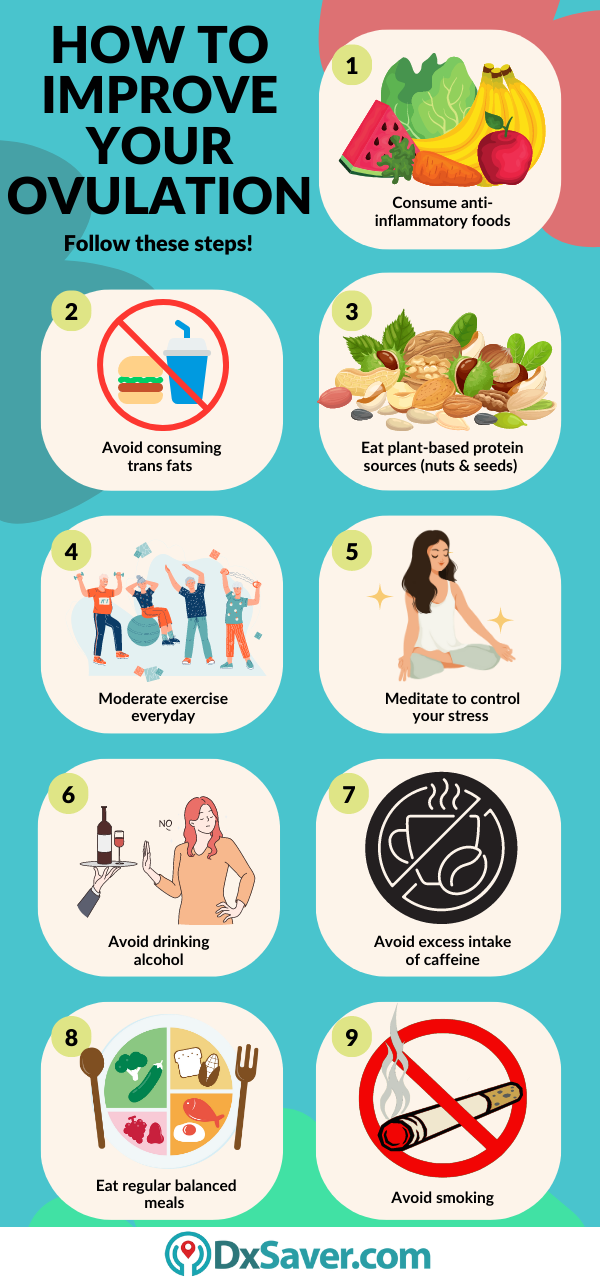
What are the different methods of Ovulation Confirmation tests?
Ovulation monitoring is essential for couples trying to get pregnant. The following methods help in monitoring ovulation:
Calendar Method: This entails keeping note of the duration of your menstrual cycle and determining when you are most likely to ovulate to estimate ovulation. However, the calendar method may not be helpful for women with irregular cycles since it is less precise than other methods.
Basal Body Temperature Procedure (BBT): This method involves taking your temperature right out of bed in the morning. You can track your ovulation when there is a modest rise in body temperature.
Method Using Cervical Mucus: This technique includes monitoring changes in cervical mucus throughout the menstrual cycle. Just before ovulation, cervical mucus becomes thin, slick, and flexible, signaling that ovulation may occur soon.
Ovulation Prediction Kits: These are easy-to-use instruments that can assist you in determining the best time to ovulate. These tests check for an increased hormonal level just before ovulation in your pee.
What is an at-home ovulation confirmation test?
Your ovulation health may be precisely measured by an at-home ovulation confirmation test, giving you complete knowledge of the condition of your ovulation cycle and ovulation health. One of the best at-home ovulation confirmation test kits is from Proov. The kit looks for PdG, a progesterone metabolite that increases in a woman’s urine before ovulation. An ovulation confirmation test predicts when ovulation is likely to happen by detecting an increase in PdG, allowing couples to schedule their intimate relations for the best chance of pregnancy.
Ovulation problems can make it challenging for couples to conceive. A couple requires an egg and sperm to get pregnant. An egg won’t receive the hormonal support it needs without proper ovulation which might make pregnancy more challenging.
Ovulation confirmation kits help overcome pregnancy challenges ovulation and determine successful ovulation by monitoring PdG (progesterone metabolite) levels on days 7 through 10 following expected ovulation.
An at-home ovulation confirmation testing comes with the following:
- For one testing cycle, you will get five PdG test strips.
- The “p” cup
- Having access to a tracking fertility hormone app
- Complete product guidelines
- Free personalized customer service
- Acceptance into the community of online fertility supporters
How is an at-home ovulation confirmation test taken?
An ovulation confirmation test kit makes it simple to verify successful ovulation from the comfort of your own home. Here are the four simple steps:
- Pee: Collect your morning urine in a clean container.
- Dip: Put the strip into the urine sample and hold it there for 5–10 seconds or until you see urine coming through the test window. Make sure to spread out.
- You will get your ovulation confirmation test results in five minutes. Negative tests show two lines, whereas positive tests have one.
- Make a plan: If all of your tests turn positive throughout the test window, your cycle’s ovulation has been successful. Poor ovulation may be the reason cause you test negative. If you test for negative ovulation, you have to decide what is done next.
What to do after an ovulation confirmation test?
If all of your tests show positive results throughout the testing window, you have verified successful ovulation, and chances are that ovulatory problems aren’t keeping you from getting pregnant. Now that you know your ovulation is healthy, you can concentrate on other potential causes that affect your ability to conceive.
However, if you test negative, this may indicate that your ovulation was either poor or absent. In this situation, we advise you to consult your doctor to check your results and discuss treatment choices. Natural therapies may work in some circumstances, but some women may require prescription-strength medicine.
What Advantages Do At-Home Ovulation Confirmation Test Kits Offer?
Using an ovulation confirmation kit when attempting to conceive has many advantages:
Convenience: You can take an at-home Ovulation confirmation at your convenience. As a result, there is no longer a need for frequent visits to the doctor’s office for ovulation monitoring.
Cost-Effective: At-home ovulation confirmation test kits are reasonably priced in comparison to other methods of fertility monitoring.
Increased Accuracy: Ovulation confirmation kits have a success rate of up to 99% and are accurate. Couples can schedule their sexual encounters to coincide with ovulation by using the kit’s precise estimate of when ovulation is likely to happen by detecting the PdG hormone.
Improved Timing: You can plan your sexual intercourse around the most fertile days of the menstrual cycle to increase the possibility of pregnancy.
Frequently asked questions:
What is PdG?
A: PdG is the progesterone metabolite found in urine. The hormone progesterone is created by the empty follicle (corpus luteum), which grows after an egg is discharged. Progesterone gets the uterus ready for embryo implantation. Implantation cannot take place if there is insufficient progesterone.
Can you ovulate and not get your period?
A: Yes. While ovulating, you may not experience your “period.” In theory, you should experience regular menstruation if you are ovulating frequently. However, it is possible to ovulate but not have a period and receive your period without actually ovulating.
Is ovulation-related pain normal?
A: Pain during ovulation is something that a lot of individuals report. The signs of ovulation pain, also known as mittelschmerz, are cramping or pelvic discomfort. These signs are known to affect you when you are close to ovulation. You frequently experience pain in your pelvis or the lower abdomen, either in the center or to one side.
How long does the ovulation process last?
A: Only 12 to 24 hours after ovulation does an egg survive. So, the sperm is reabsorbed by your body if it does not fertilize the egg. Sperm, in contrast to your egg, may remain alive in your body for several days.
Why is an ovulation confirmation test necessary?
A: Individuals or couples who are attempting to get pregnant are people who often utilize ovulation confirmation tests. These tests can aid in maximizing the timing of sexual activity by pinpointing the fertile window, which is the period when the likelihood of becoming pregnant is the highest.
Other topics that you may be interested in:-
- What is the testing cost for urinary analysis in the U.S.?
- Symptoms for Rheumatoid Arthritis
- Why should you take Rubella Test?
- Cost of an At-Home Syphilis Test Kit in the U.S.
- At-Home Chlamydia Testing in the U.S.
- What are the symptoms of dog allergy?
- What is a TSI Thyroid Test?
- Test cost for Thyroid T4 Test in the U.S.
- What is the purpose of the potassium blood test?
- What are the causes of Shellfish Allergy?
- STD Testing in NYC (New York City)
- What is an ALT Blood test?
- How should you prepare for a Microalbumin Test?
- Causes & Symptoms of High & Low Uric Acid Levels in Blood
- Planned Parenthood STD Testing Cost Vs. Other Health Providers





